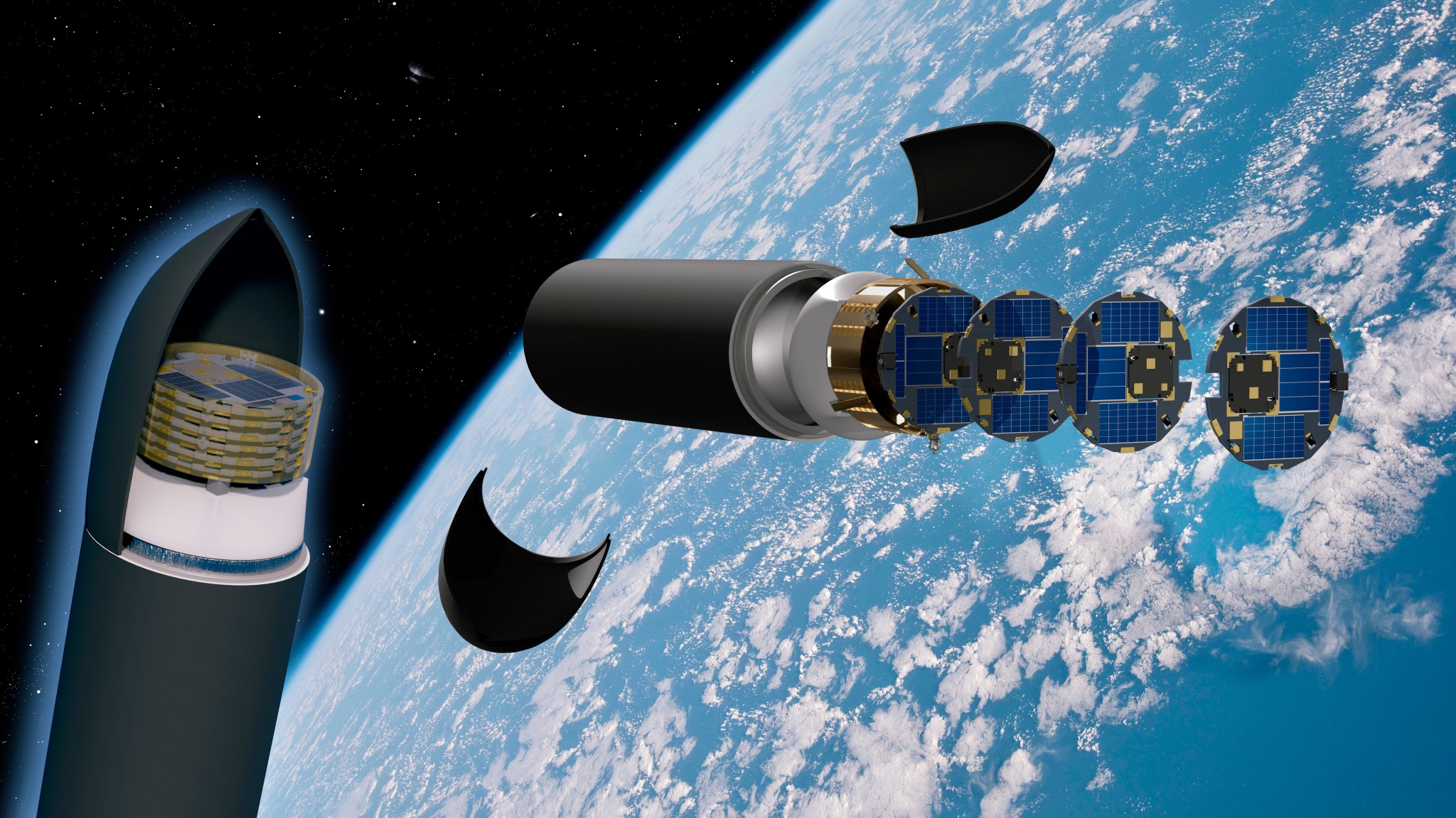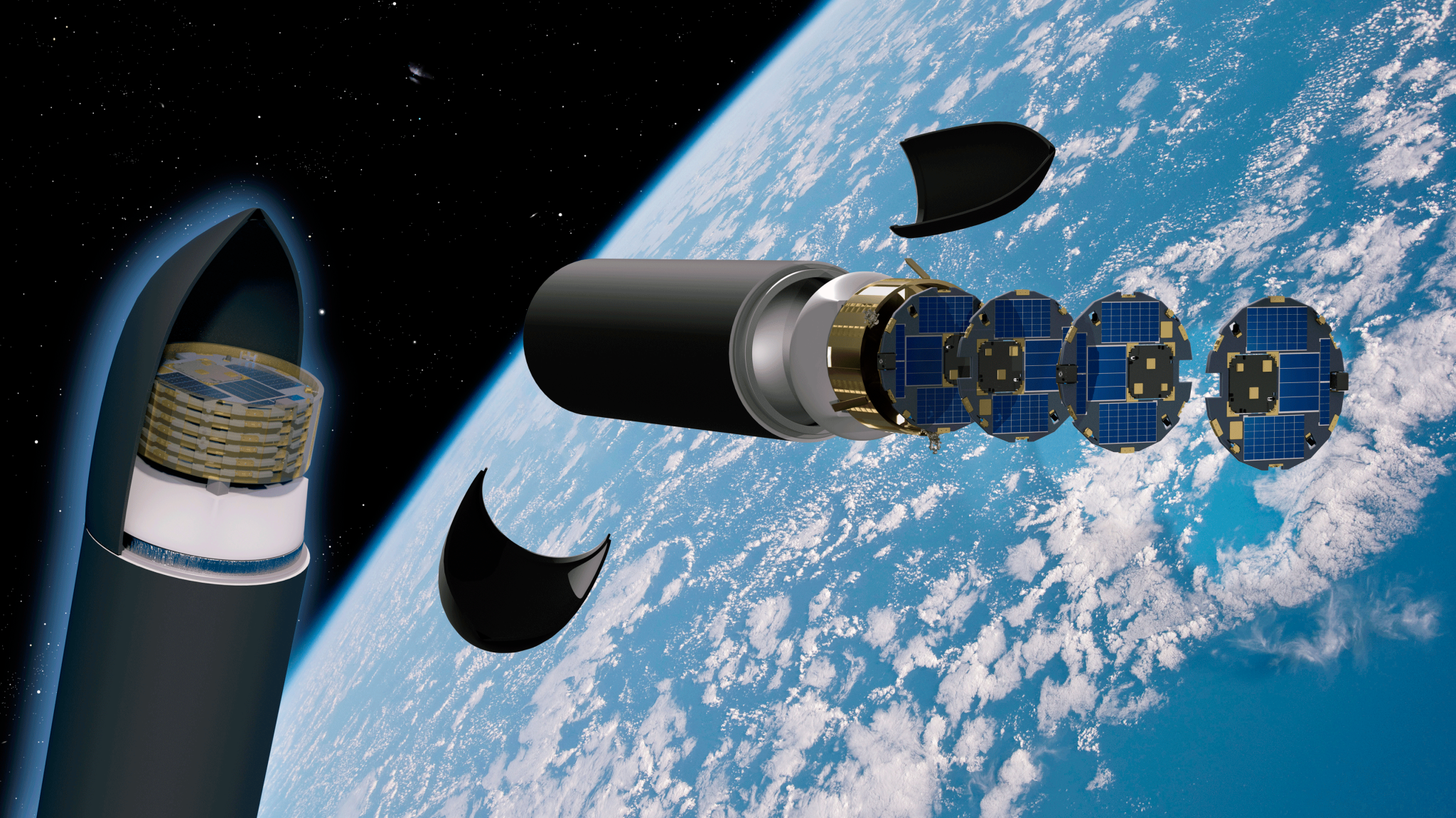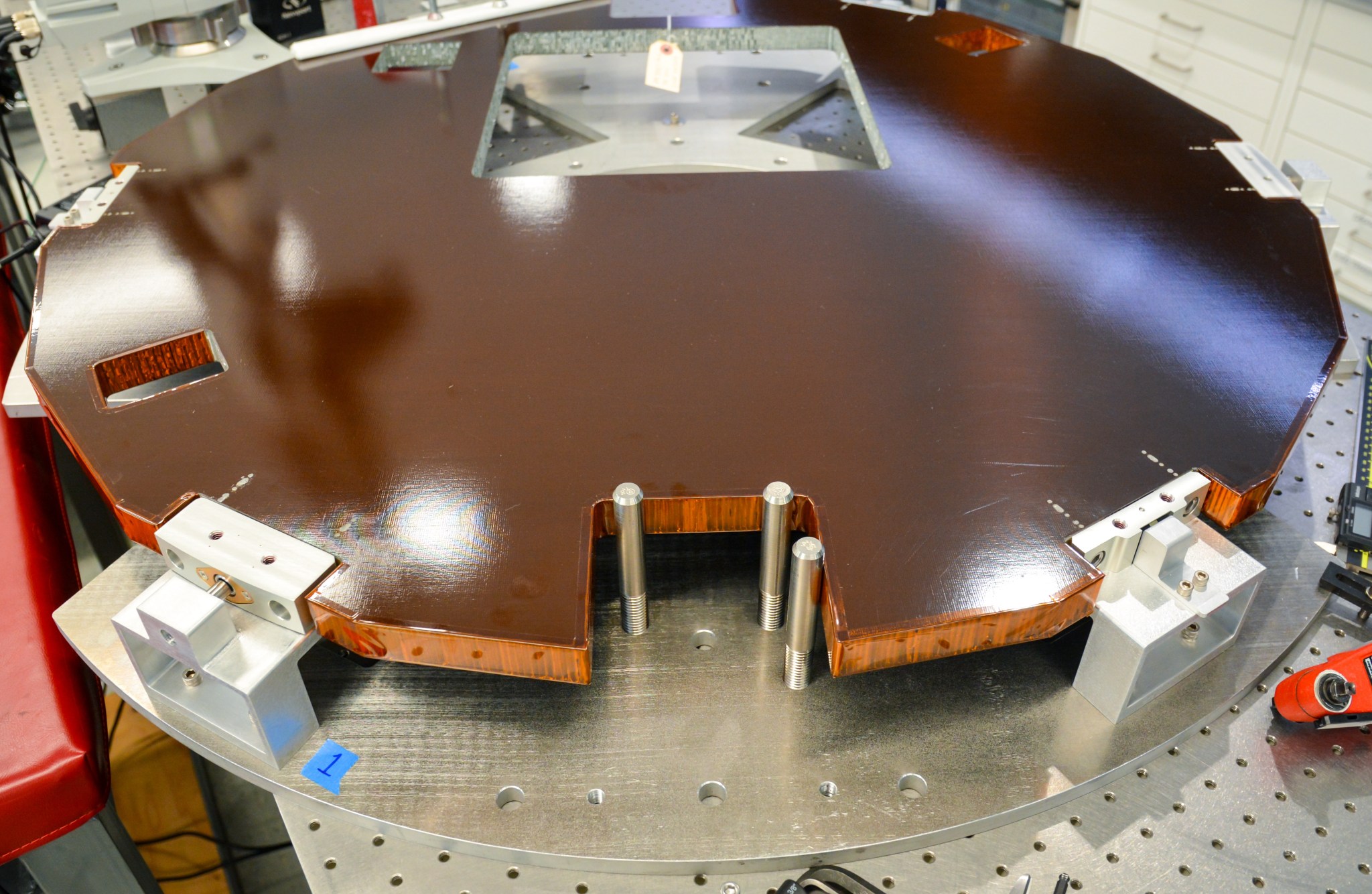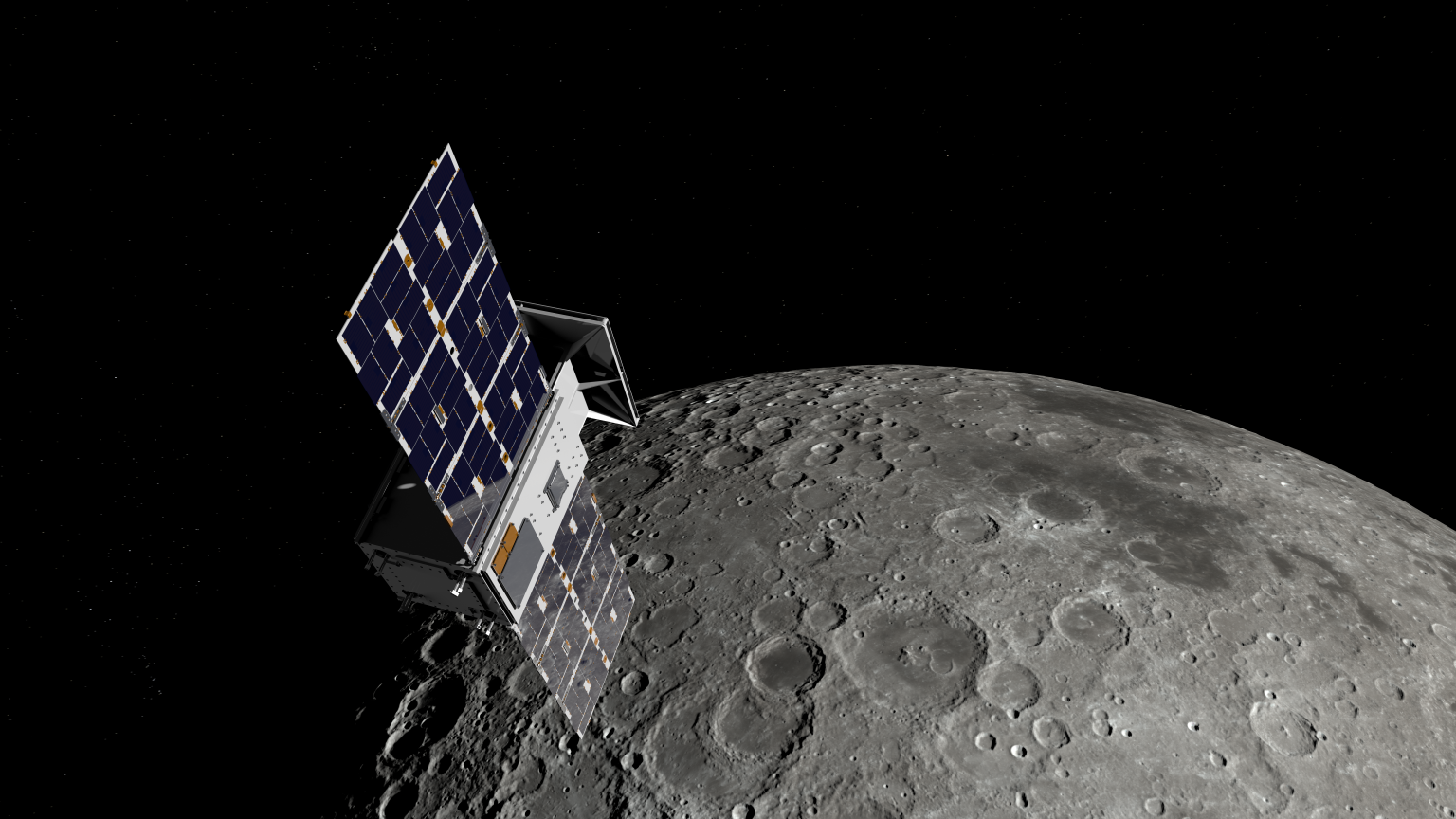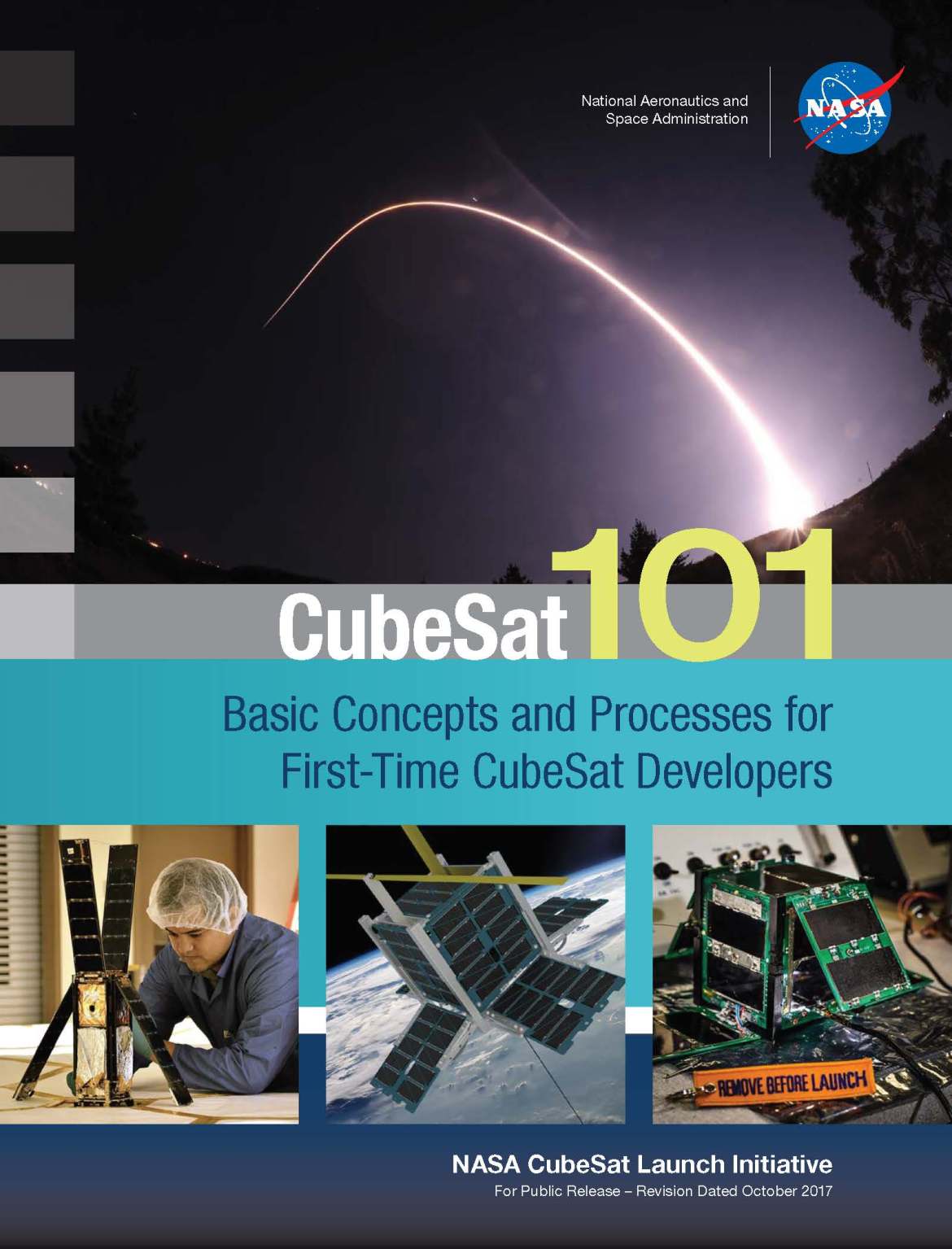NASA is funding designers of small spacecraft at The Aerospace Corporation in El Segundo, California, to develop a technology demonstration of an evolutionary alternative to the CubeSat standard that maintains the benefits of that platform while overcoming key limitations. DiskSat is a plate-shaped satellite 40 inches in diameter and an inch thick that could offer more power and surface area for instruments, providing more opportunities for NASA to expand upon target mission objectives for small spacecraft. CubeSats are popular with organizations interested in developing and flying cost-effective and launch-friendly small spacecraft due to their standardized shape, volume, and design. Because CubeSats ride to space in a standard box, referred to as containerization, the simplified interfaces between the CubeSat and launch vehicle readily lend themselves to inexpensive rideshares with frequent and flexible launch opportunities.
Spurred by commercial interests, many CubeSat subsystems, such as communication and navigation, are mass produced, and off-the-shelf products are available. However, because of its small size and box-like structure, the CubeSat design has a small surface area and places tight limits on power and aperture (surface areas that can be dedicated to large antennas or instruments that need exposure to space), limiting the ability of CubeSats to achieve some mission objectives.
The DiskSat maintains the containerization of CubeSats (using a standard launch container), but uses an entirely new shape: a flat disk that, for the first demonstration mission, is only 1 inch (2.5 cm) thick by 40 inches (1 meter) in diameter. DiskSats use standard CubeSat subsystems, leveraging products of the CubeSat industry. For launch, many DiskSats can be stacked to fit within a launch vehicle’s fairing and are deployed one at a time after the launch vehicle reaches orbit; an ideal approach to building large constellations of small spacecraft.
Like the CubeSat, the DiskSat design is adaptable. DiskSat dimensions can be increased or decreased to match the dimensions of a launch vehicle, without changing the deployment system. Although some oversize components may be allowed to protrude beyond the disk surface, in most DiskSats the electronics and other subsystems that comprise a typical small spacecraft are arranged within the internal volume of the DiskSat. This is similar to a CubeSat, but with the large volume of the DiskSat more payload volume is available, and the flat layout makes internal components more easily accessible, simplifying the build and test process.
Because of the large surface area, DiskSats offer high-power and high-aperture capabilities not possible with CubeSats. Additionally, DiskSats do so without giving up the benefits of the CubeSat, such as a standardized launch interface, low-launch costs, and simple mechanical design.
Mission Applications for DiskSats
There are several mission applications well suited to the DiskSat concept. With the increase in capability of small spacecraft subsystems, constellations of small spacecraft are becoming the focus of many science investigations as well as continued technology demonstrations. Constellations of high-power, large-aperture, low-mass satellites for missions involving the need for communications and radar are examples. DiskSat’s large surface area is conducive to missions involving signaling, such as those requiring multiple radio frequencies or high-gain antennas.
The high power available on DiskSats also makes electric propulsion an ideal option for many missions. Missions needing continuous thrust for precise orbit maintenance, missions needing extensive orbit raising or lowering, missions needing to de-orbit at end of life, and missions needing the ability to propel themselves from Earth orbit to lunar orbit are all good candidates for DiskSat missions.
With its ability to fly continuously with one face pointing at the Earth, the DiskSat can also have a very low drag, making them capable of very-low altitude missions (less than 300 kilometers or 185 miles) such as those necessary for some Earth observation missions.
DiskSat Demonstration Mission
NASA’s Small Spacecraft Technology (SST) program is funding the design and development of a DiskSat constellation mission composed of four DiskSats to verify the performance of this new small-spacecraft platform and demonstrate the launch dispenser mechanism.
The constellation will showcase DiskSat’s maneuverability. The DiskSats in this technology demonstration will have electric propulsion for orbit changing and orbit maintenance. After initially deploying all four satellites at the same altitude, two satellites will maneuver to lower altitudes while the other two will raise their orbits to demonstrate high-altitude operations. This first DiskSat demonstration is anticipated to launch no earlier than April 2026.
Partners:
- NASA’s Small Spacecraft Technology program within the agency’s Space Technology Mission Directorate funds and manages the DiskSat technology demonstration.The program is based at NASA’s Ames Research Center in California’s Silicon Valley.
- The Aerospace Corporation of El Segundo, California, is leading the design and development of the DiskSat concept as well as the DiskSat constellation technology demonstration.
Learn more:
For investigators:
Investigators interested in funding opportunities with the Small Spacecraft Technology program, please visit here.
For technical inquiries about DiskSat, contact: arc-sst@mail.nasa.gov
For news media:
- Members of the news media interested in covering this topic should reach out to the NASA Ames newsroom.



























